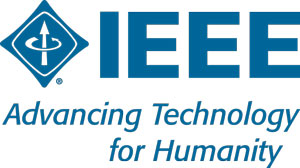Hrvatska sekcija IEEE poziva sve zainteresirane na dva predavanja Sekcije:
Reliable Face Recognition Methods
- Applied Modern Pattern Recognition -
Recognition-by-Parts Methods
- Boosting and Strangeness -
- Adaptive and Robust Correlation Filters -
koja će održati Prof. Harry Wechsler, IEEE Fellow, Department of Computer Science, George Mason University, USA, u ponedjeljak, 02. srpnja 2007., u 14:00 sati, u Sivoj vijećnici na Fakultetu elektrotehnike i računarstva Sveučilišta u Zagrebu, Unska 3. Predavanja će biti održana na engleskom jeziku, svako predavanje u trajanju od 45 minuta, nakon čega je predviđena diskusija. Sažetak predavanja i informacija o predavaču nalaze se u opširnijoj obavijesti.
Reliable Face Recognition Methods
– Applied Modern Pattern Recognition –
Abstract: Biometrics measure the physical appearance of people and their behavioral traits for authentication and security purposes. One of the grand challenges for computational intelligence is to understand how people process and recognize each other's face and to develop automated and reliable face recognition methods. Towards that end we consider the state-of-the art for biometrics, and outline modern pattern recognition architecture and methods to meet successfully current biometric challenges. The emphasis is on using feed-forward and configural / holistic perceptual architectures for the representational stage, and learning using boosting and transduction for the decision-making stage. This leads to recognition-by-parts strategies and addresses among others open set recognition, and occlusion, disguise, and temporal change. We conclude our talk with an outline of venues for future research that includes active learning and query by transduction, change detection from data streams using martingales, and the use of the temporal dimension and spatial-temporal coherence.
Recognition-by-Parts Methods
– Boosting and Strangeness –
– Adaptive and Robust Correlation Filters –
Abstract: The challenge for biometrics is to withstand image variability and defend against impostors seeking to breach security. While faces can be partially occluded and/or disguised some of their parts and configuration remain unchanged and can still be properly detected and authenticated. Towards that end we describe and motivate complementary recognition-by-parts methods based on boosting and strangeness, and adaptive and robust correlation filters.
The boosting and strangeness method has access to parts that are clusters of local patches described using SIFT features. The recognition method is model free and non-parametric. It selects weak learners, which correspond to parts and/or their relations, and builds strong classifiers using boosting. The strangeness based multi-class weak learner selected at each iteration during boosting corresponds to the most discriminative part. The confidence and thresholds required for the strangeness based weak learners are found using cross-validation characteristic of open set recognition.
Adaptive and robust correlation filters (ARCF), characteristic of the second method, expand on the MACE filters and draw from adaptive beam-forming. The adaptive aspect of ARCF comes from its derivation using both training and test data, similar to transduction, while their robust aspect comes from being optimized to decrease their sensitivity to distortions. The cluster and strength of the ARCF correlation peaks record the confidence of the face authentication made, if any.
We report on experimental results that show the feasibility and utility of the methods described vis-a-vis occlusion, disguise, and temporal change.
Biography: Harry Wechsler received the PhD degree in information and computer science from the University of California, Irvine. Currently, he is a professor of computer science and director for the Center of Distributed and Intelligent Computation at George Mason University (GMU). His research in the field of intelligent systems focuses on computational vision, image and signal processing, data mining, and machine learning and pattern recognition, with applications to biometrics / face recognition / gait analysis / performance evaluation, augmented cognition and HCI, change detection and link analysis, and video processing and surveillance. He has published more than 250 scientific papers, serves on the editorial board of major scientific publications, and is the author of Computational Vision (Academic Press, 1990). As a leading researcher in face recognition, he organized and directed in 1997 the seminal NATO Advanced Study Institute (ASI) on “Face Recognition: From Theory to Applications” whose proceedings were published by Springer in 1998. His book on Reliable Face Recognition Methods, which breaks new ground in applied modern pattern recognition and biometrics, was published by Springer in the fall of 2006. Dr. Wechsler has directed at GMU the design and development of FERET, which has become the standard facial data base for benchmark studies and experimentation. He was elected an IEEE Fellow in 1992 for “contributions to spatial/spectral image representations and neural networks and their theoretical integration and application to human and machine perception” and an IAPR (International Association of Pattern Recognition) Fellow in 1998. He was granted (together with his former doctoral students) two patents by USPO in 2004 on fractal image compression using quad-q-learning (licensed in 2006) and feature based classification (for face recognition). Two additional patents (together with his former doctoral students) on open set (face) recognition (and intrusion / outlier detection) and change detection using martingale are now pending with USPO.







